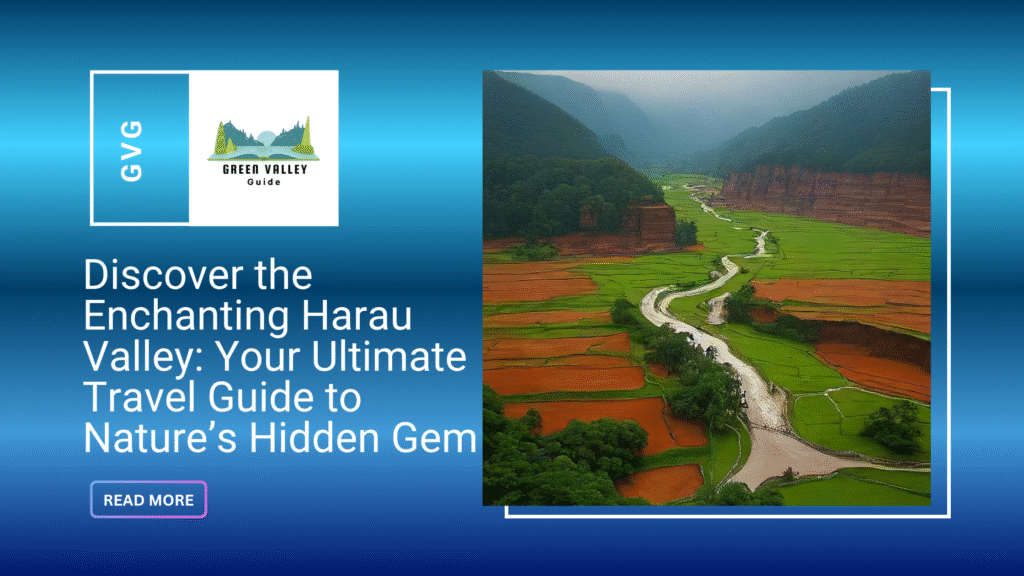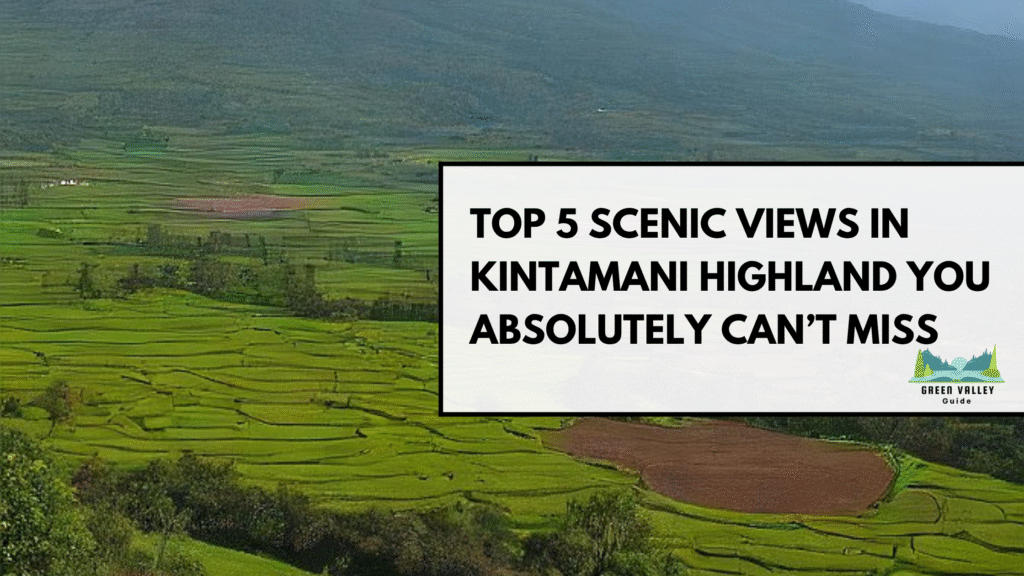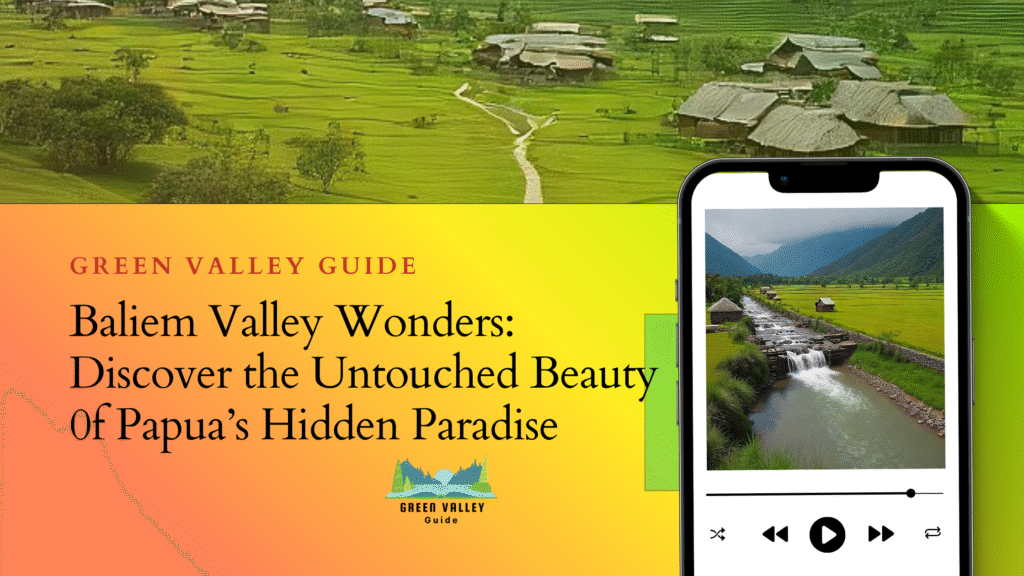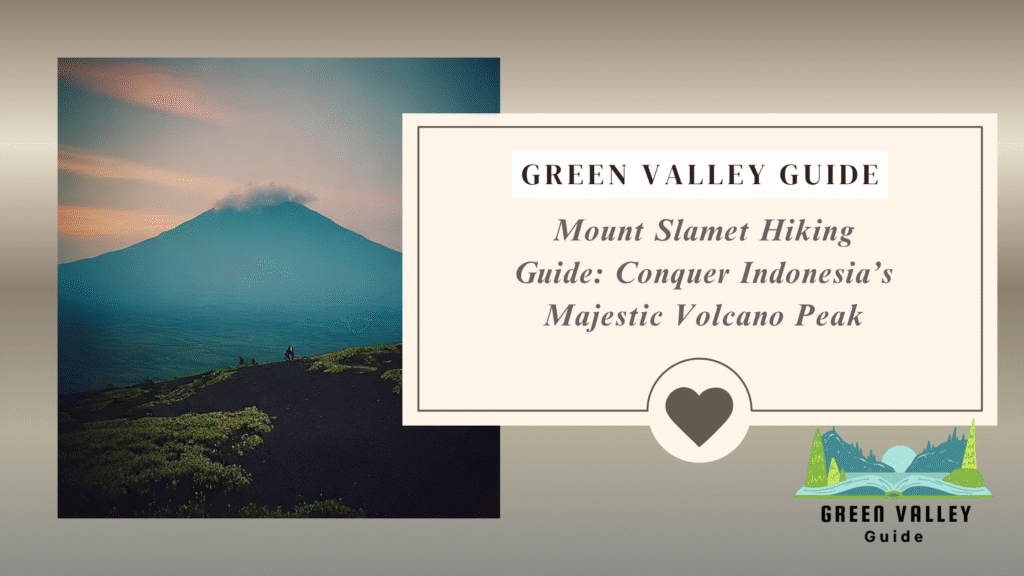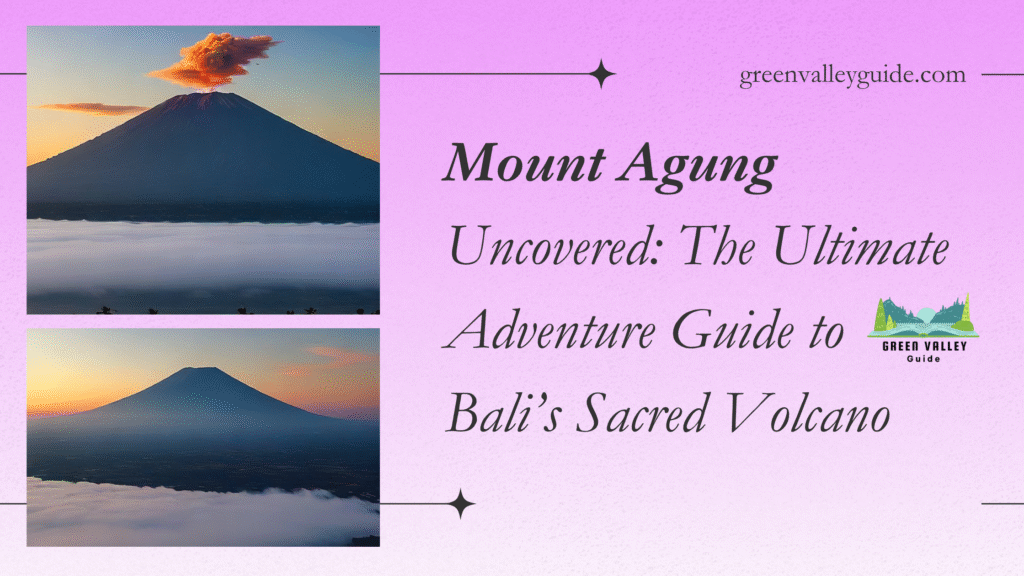Table of Contents
Introduction: Welcome to the Breathtaking Harau Valley
Harau valley has the cliffs that are a few hundred feet tall, precious rice fields that are lush green, flowing waterfalls, which are kind of an Indonesian alternative to Yosemite, but the place is not marred by the visitors and is almost heaven on earth. This is a peaceful haven that is hidden in the Regency of Limapuluh Kota in West Sumatra, a place where nature and culture intersect in one of the visual scores in the whole of Southeast Asia.

A hiker looking to follow the waterfall, a photographer hunting to take those foggy morning shots, or a traveler looking to immerse himself in the culture of the Minangkabau people, Harau Valley can give you something, so to speak, unique: the real adventure within a virgin surrounding.
Consider it an ultimate travel guide as it will tell you how to get there, what to see, where to stay, when to go, and how to travel responsibly so that you can enjoy the magic of the valley of Harau without leaving a scar.
Where Is Harau Valley? Exploring West Sumatra’s Scenic Wonder
One of the Indonesian Sumatra Regencies that harbor the Harau Valley is called the Limapuluh Kota Regency in West Sumatra. It is in a beautiful countryside amid towering cliffs, and it is approximately 50km north east of Bukittinggi and 130km to Padang, its nearest city with an airport.
The Way to Go:
- A journey by either a private car or minibus is also a beautiful 3.5 to 4-hour ride departing Padang.
- Out of Bukittinggi, it takes a little bit less, approximately 90 minutes by land route.
- There is a good transport system in operation, but it is advisable to either engage the services of a local driver or take a tour to be comfortable and adaptable to any situation.
Why It’s Called a Hidden Gem:
Harau Valley is off the beaten track, even sometimes among foreign visitors, despite its jaw-dropping scenery. It is a local Indonesian favorite destination, but it is not yet consumed by business tourism. This implies that you are still able to enjoy pure village life, peace and quiet nature, and a lack of people in the trails, which is rare to see in Southeast Asia.
The Geological Beauty of Harau Valley
The scenery of Harau Valley is dominated by steep granite mountains, reaching as high as 150 meters, providing a dramatic scenery in support of the rice lines and jungle, on which it is situated. These cliffs belong to an old geological structure that is millions of years old.
Unique Rock Formations:
The erosion, precipitation, and earthquake have carved out the cliffs into vertical walls, openings, and overhanging ledges that give the best conditions for rock climbing and exploration. These stone walls are so large that they also serve as natural sound amplifiers; thus, the sounds of the falling waters and the birds’ calls are only more magical.
Geological Significance in Sumatra:
Harau is found in the Bukit Barisan mountain range that traverses across the backbone of Sumatra. It presents the tectonic history of the island, and provides geologists, ecotourists, and adventurers with a unique opportunity to view how volcanic and sedimentary processes form tropical valleys.
Waterfalls of Harau Valley: Nature’s Serene Symphony
The waterfalls of Harau Valley are one of the high points of this area, and some actually pass right alongside the road or just outside guesthouses. Their calming water and their cloudy mist intensify this magical atmosphere of the valley.
Must-Visit Waterfalls:
- Sarasah Bunta – Is accessible with ease and perfect to stop and have some quick dips and picture-worthy landscapes.
- Akar Berayun – It is famous for its swaying roots and mysticism.
- Sarasah Lembah Harau– It is a stunning cascade that is surrounded by jungle, which is rather high.
Best Time to Visit:
- Waterfalls are most precipitous in the wet season (November to April), but light rains can render some of the trails muddy.
- May to September (dry season) is preferable to allow comfortable hiking and has easier access to sunlight in order to take photos, especially when a great amount of water fluctuations is not needed.
What to Do There:
- Swimming in natural pools at the falls
- Having picnics with a view of the valley and the cloudy cliffs
- The rock faces, especially during the golden hour, when sunlight allows photography.
Hiking and Outdoor Adventures in Harau Valley
Harau Valley is full of natural adventures of all physical capabilities, so in case you are an outdoor person, then Harau Valley is the place to be.
Popular Hiking Trails:
Discover tropical rice fields, seaside scenery, and forest trails. Among the more popular routes are:
- Bukit Air Putih trail- These are identical to its panoramic views.
- Jungle routes close to Sarasah Bunta – Perfectly formed pathways to find waterfalls and wildlife, especially when you are new to this.
Rock Climbing Opportunities:
Harau’s towering granite cliffs are a paradise for climbers.
- The bolted climbing crags have more than 300 routes created by local and international climbers.
- There are guided climbs in some of the nearby villages at every skill level of skills.
Wildlife Spotting:
- Be alert and watch out for stunning long-tailed macaques, colorful kingfishers, and multicolored butterflies flying along the streams.
- Early morning can be spent bird watching, where one can see hornbills and sunbirds.
Check Out: Top 5 Scenic Views in Kintamani Highland You Absolutely Can’t Miss.
Cultural Encounters in Harau Valley

The visit to Harau Valley is not merely a visit to natural beauty but serves as an entry to West Sumatra’s cultural heritage.
Meet the Minangkabau People:
The natives Minangkabau, are matrilineal and very friendly. They have been described by the visitors as welcoming and proud of their culture.
Traditional Rumah Gadang:
- You will not regret the opportunity to take a look at or even spend the night in a rumah gadang, a typical Minangkabau house that has the incredible curved roof and spooky carvings on it.
- Tourists can visit some of the villages that provide cultural performances and ceremonies.
Local Food & Homestays:
- Taste the best Minang cuisine like rendang, gulai, and sambal balado.
- Most homestays will provide homemade food, so you will have a great experience and taste of the culture.
Where to Stay: Homestays, Eco-Lodges & Guesthouses
You can wish to have rustic or environmental luxury, Harau Valley provides an array of accommodation to suit your preference.
Top-Rated Places to Stay:
- Abdi Homestay – Houses that one is always likely to encounter when touring around, since it has an exterior that the visitor will find comfortably inviting, and its sites include the cliffs.
- Echo Homestay is A well-known and largely sustainable homestay and almost quiet surroundings.
- Lembah Echo Resort. This is just great for a family or a group of people who want to experience the comfort of nature.
Nature-Based Stays:
Select a stay that will put you in the middle of the valley with waterfalls, rice fields, or jungle walks in the neighborhood.
Booking Tips:
- Even during high season (June to August), book early.
- In the rainy season, find locations that have good access roads and hot showers when you have the time.
Best Time to Visit Harau Valley: Seasons & Weather Tips
Knowing the weather may help you have fun and be safe in the Harau Valley.
Dry Season (May to September):
- Ideal time to hike, take photographs, and sightseeing.
- They can still find Accessible trails, and waterfalls are still in existence.
- The day climates are very sunny and the nights are cool, creating comfortable outdoor stays.
Rainy Season (October to April):
- An average day will involve rain and dirty tracks.
- There are more waterfalls, harder trekking.
- Superb photo-taking grounds when lush, but do watch the skids.
What to Pack:
- Lightweight rain Jacket
- Grip hiking shoes
- Mosquito repellent and sunscreen
- An epic scenery-capturing camera or drone
How to Travel Responsibly in Harau Valley
Your trip to Harau Valley can contribute to the preservation of this natural and man-made treasure, in case you go there without stupidity.
Respect Local Communities and Culture
- Do not take photos without the permission of the local people or venture into villages.
- Wear decently and obey local practice.
- Patronise local homestays, guides, and restaurants.
Eco-Friendly Travel Tips
- Pack an eco shopping bag and a water bottle.
- Stay away from single-use plastics- most homestays have refill bottles.
- Do not go off the marked trails, you will destroy flora and rice paddies.
The Role of Sustainable Tourism
- The benefits of responsible tourism include incomes that are used in maintaining ecosystems and the culture of the people in Harau Valley.
- Select only eco lodges and ethical tour guides who contribute to the community.
Extend Your Adventure: Nearby Attractions Worth Exploring

In case you have been smitten with Harau Valley, then West Sumatra has lots to offer you.
Must-See Natural Attractions:
- Lembah Anai Waterfall is a beautiful roadside waterfall, close to Padang.
- Sianok Canyon- A spectacular canyon near Bukittinggi with ancient scenery.
- Lake Maninjau is a peaceful crater lake where you can cycle or go to and have a leisurely time.
Suggested Travel Itineraries:
- The combination of Bukittinggi and Combine Harau is a cultural heritage.
- Include a detour in Padang with sea views and food.
- Take a cultural path on Minangkabau in traditional villages.
Local Markets & Festivals:
- Time your visit with the Tabuik Festival or local food fairs.
- Check the Payakumbuh traditional markets for their souvenirs and textiles.
Conclusion: Harau Valley—Where Nature and Culture Embrace
Harau Valley is not just a picturesque place to come and rest; it is an active balance between the rock formations, cascades, rice fields, and the culture. A trekker, photographer, nature and/or culture lover, you are bound to find a rare combination of tranquility as well as soul in Harau.
Twist down a less-traveled path, and you will get a valley that would not leave a trace in the photographs alone, but in your heart as well.
For more info: Click Here.
FAQs About Visiting Harau Valley
Q1: What transport links Harau Valley in Padang?
You could go either by bus/private car to Payakumbuh, then by a short ride to Harau Valley, Padang. The time of travel is approximately 3.5 or 4 hours.
Q2. Can Harau Valley be visited by a solo person or a family?
Absolutely. It is a safe and friendly destination for a solo traveler, and most of the accommodation facilities and paths are family-friendly.
Q3: Must I have an accompaniment in touring Harau Valley?
As much as you are able to visit some of the places on your own, it is advisable to contract a local guide when on a hike or to visit the rocks, or to visit the cultural places, as it makes the trip more interesting.

